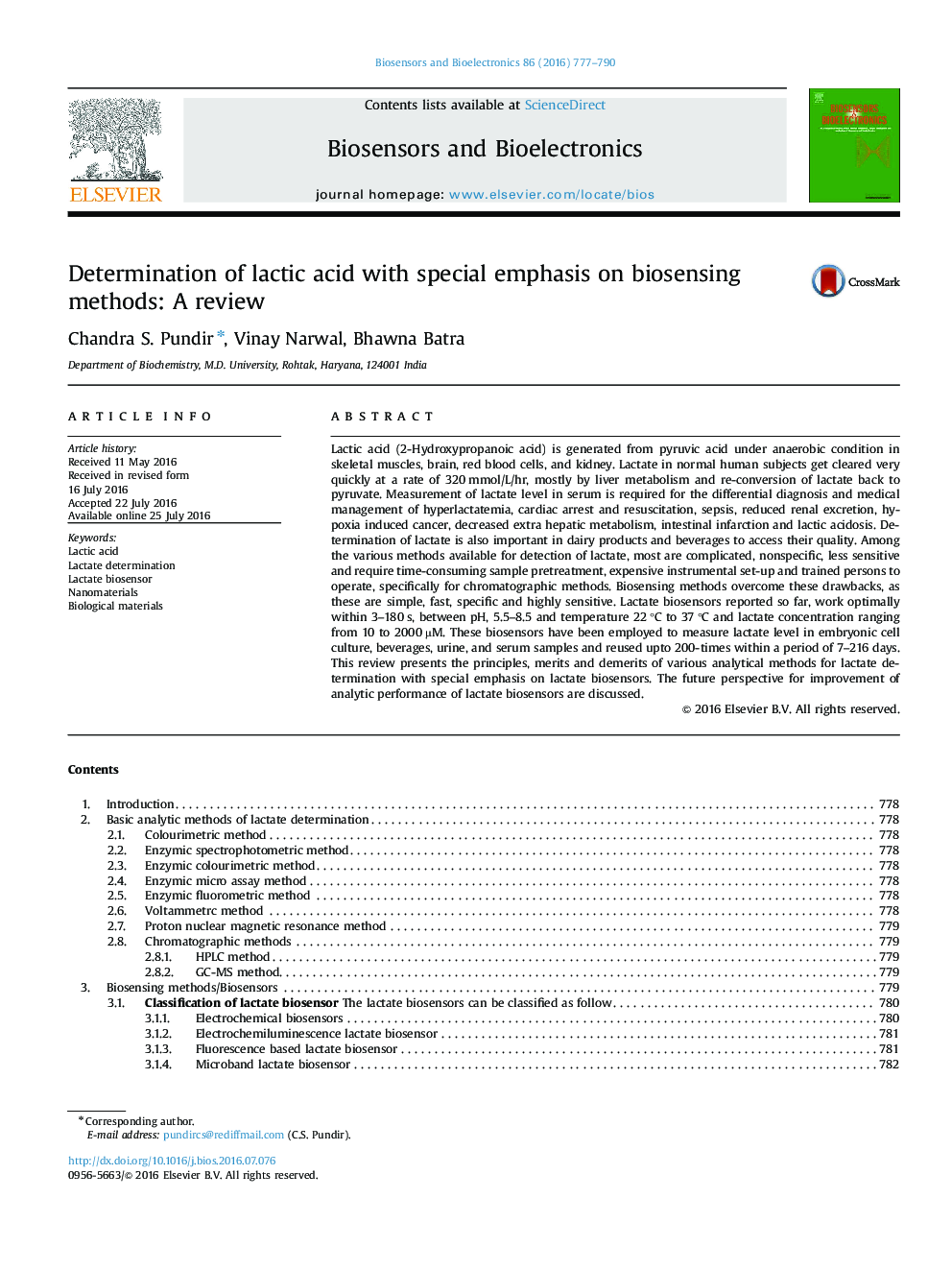| Article ID | Journal | Published Year | Pages | File Type |
|---|---|---|---|---|
| 7230026 | Biosensors and Bioelectronics | 2016 | 15 Pages |
Abstract
Lactic acid (2-Hydroxypropanoic acid) is generated from pyruvic acid under anaerobic condition in skeletal muscles, brain, red blood cells, and kidney. Lactate in normal human subjects get cleared very quickly at a rate of 320 mmol/L/hr, mostly by liver metabolism and re-conversion of lactate back to pyruvate. Measurement of lactate level in serum is required for the differential diagnosis and medical management of hyperlactatemia, cardiac arrest and resuscitation, sepsis, reduced renal excretion, hypoxia induced cancer, decreased extra hepatic metabolism, intestinal infarction and lactic acidosis. Determination of lactate is also important in dairy products and beverages to access their quality. Among the various methods available for detection of lactate, most are complicated, nonspecific, less sensitive and require time-consuming sample pretreatment, expensive instrumental set-up and trained persons to operate, specifically for chromatographic methods. Biosensing methods overcome these drawbacks, as these are simple, fast, specific and highly sensitive. Lactate biosensors reported so far, work optimally within 3-180 s, between pH, 5.5-8.5 and temperature 22 °C to 37 °C and lactate concentration ranging from 10 to 2000 µM. These biosensors have been employed to measure lactate level in embryonic cell culture, beverages, urine, and serum samples and reused upto 200-times within a period of 7-216 days. This review presents the principles, merits and demerits of various analytical methods for lactate determination with special emphasis on lactate biosensors. The future perspective for improvement of analytic performance of lactate biosensors are discussed.
Related Topics
Physical Sciences and Engineering
Chemistry
Analytical Chemistry
Authors
Chandra S. Pundir, Vinay Narwal, Bhawna Batra,
